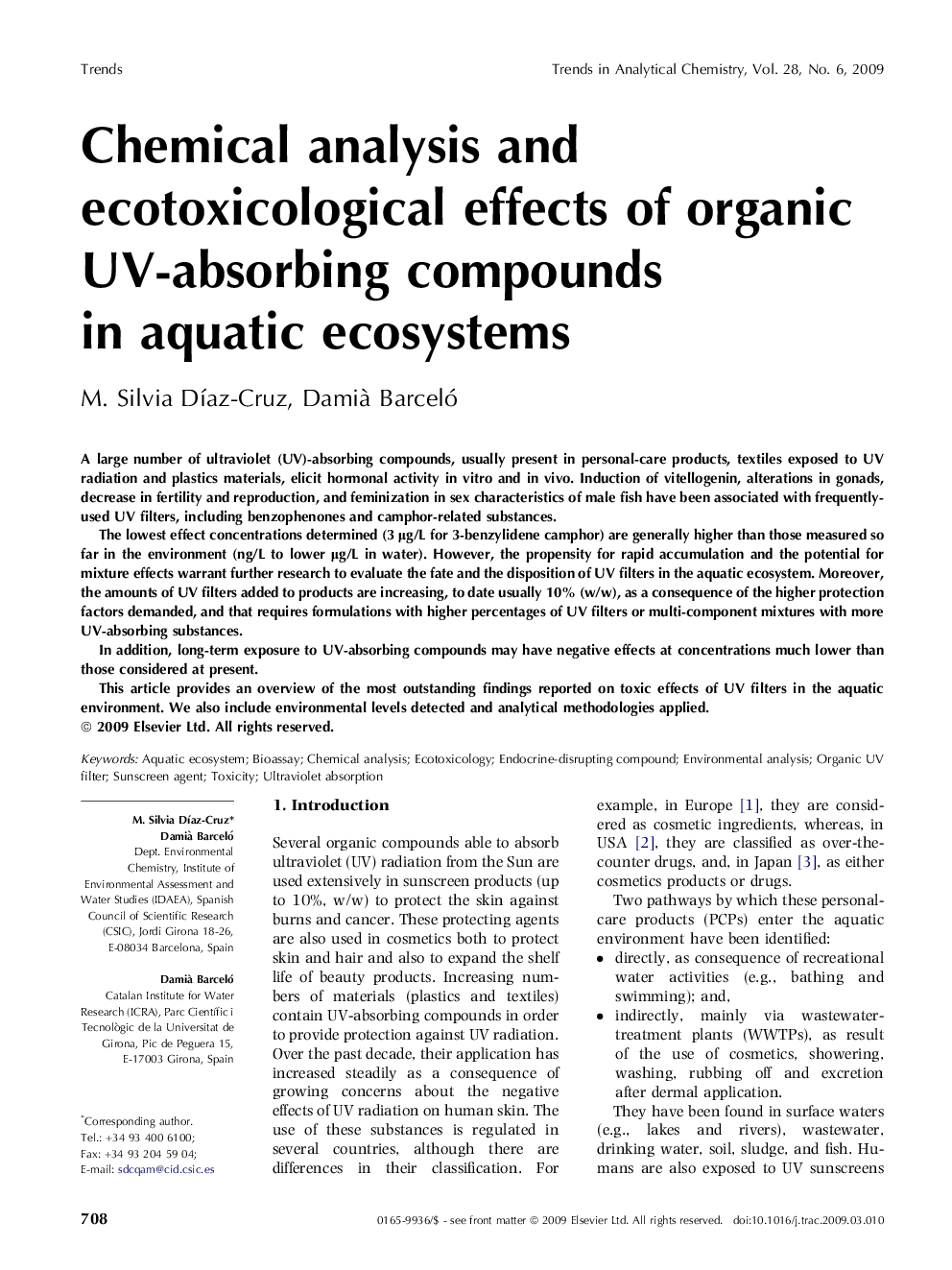| Article ID | Journal | Published Year | Pages | File Type |
|---|---|---|---|---|
| 1248349 | TrAC Trends in Analytical Chemistry | 2009 | 10 Pages |
A large number of ultraviolet (UV)-absorbing compounds, usually present in personal-care products, textiles exposed to UV radiation and plastics materials, elicit hormonal activity in vitro and in vivo. Induction of vitellogenin, alterations in gonads, decrease in fertility and reproduction, and feminization in sex characteristics of male fish have been associated with frequently-used UV filters, including benzophenones and camphor-related substances.The lowest effect concentrations determined (3 μg/L for 3-benzylidene camphor) are generally higher than those measured so far in the environment (ng/L to lower μg/L in water). However, the propensity for rapid accumulation and the potential for mixture effects warrant further research to evaluate the fate and the disposition of UV filters in the aquatic ecosystem. Moreover, the amounts of UV filters added to products are increasing, to date usually 10% (w/w), as a consequence of the higher protection factors demanded, and that requires formulations with higher percentages of UV filters or multi-component mixtures with more UV-absorbing substances.In addition, long-term exposure to UV-absorbing compounds may have negative effects at concentrations much lower than those considered at present.This article provides an overview of the most outstanding findings reported on toxic effects of UV filters in the aquatic environment. We also include environmental levels detected and analytical methodologies applied.
